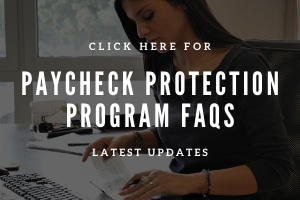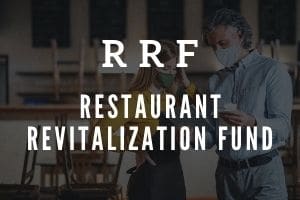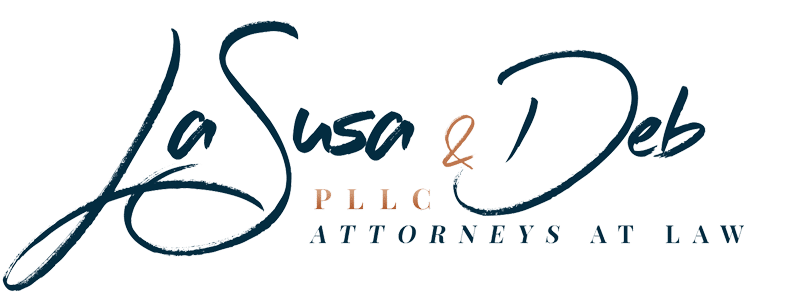The Paycheck Protection Program under the CARES ACT is very new and still riddled with issues. Because of this, we are cautioning that the program will probably not live up to the overhyped expectations. Currently, this is our understanding of how the PPP program calculation will theoretically work. However, we understand that the program is in a constant state of flux at the moment and things are subject to change at any moment.
In theory, the PPP provides money to pay employee payroll and related costs, rent, utilities, and a handful of other business expenses over eight weeks. The loan amount is 2.5 times the average monthly payroll costs your small business incurs over the twelve months preceding the loan. Treasury guidance indicates that you will most likely be looking back at 2019’s payroll. If the program works as expected this would mean:
Example: You pay $10,000 a month on average for wages, health insurance, and state payroll taxes. You, therefore, qualify potentially for a $25,000 loan.
Example: You pay $1,000,000 a month on average for wages, health insurance, and state payroll taxes. You therefore potentially qualify for a $2,500,000 loan.
Payroll costs include payments made to a sole proprietor from money earned in the trade or business.
Example: A sole proprietorship generates $36,000 in self-employment earnings for its owner. From these earnings, the owner takes a monthly draw. We would estimate $3,000 as the average monthly payroll cost.
The PPP Loan is Free Money If, AND WE CANNOT STRESS THIS ENOUGH, You Follow the Rules
Example: You borrow $50,000. Over the next eight weeks, you then use the $50,000 for employee payroll (an approved expense.) You don’t have to pay back the $50,000 loan.
Note: No more than 25% of the money you spend from the PPP loan proceeds can go for non-payroll casts if you want full forgiveness of the loan.
Also, if you reduce the average number of full-time employees in your firm after receiving the PPP loan, the headcount reduction also reduces the amount of loan forgiveness.
Example: You reduce firm employees from ten to eight workers, a 20 percent reduction. Then in theoretically you only receive forgiveness for 80 percent of the loan because you only retained 80 percent of your workforce.
To determine whether you have reduced the number of full-time employees, the loan forgiveness formula compares the full-time employees during the eight weeks after you get the loan to the average number of full-time employees you paid from February 15 to June 20, 2019, or January 1 to February 29 of 2020. You have the option of whether the comparison will look at 2019 or 2020 numbers. If you reduce the wages you pay your employees by more than 25%, that reduction also reduces the amount of loan forgiveness.
Example: To save money, you reduce employee salaries by 30 percent after you receive your loan. In this case, you only receive forgiveness for 70 percent of the loan because you pay employees only 70 percent of what you paid when you got the loan.
You do not get forgiveness for the federal taxes you withhold from an employee’s paycheck. Only the employee’s net paycheck results in forgiveness. Because of this, we advise that you ensure your company can cover payroll taxes.
Example: You have an employee who makes $1,000 a week for the eight weeks the forgiveness formula looks at. The employee’s weekly paycheck, however, equals $800. The $200 reduction occurs because of the Social Security, Medicare and federal income taxes imposed or withheld. Only the $800 net paycheck will be forgiven.
If the PPP loan is not for you, you may still qualify for an employee retention credit. Regardless of if you qualify for PPP we recommend all of our clients consider the SBA EIDL program.
PPP Limitations
The loan amount is limited to firms with fewer than 500 employees.
The maximum loan amount is $10,000,000. You may count payroll costs up to $100,000 per employee per year.
Example: A firm with ten employees each making $100,000 annually qualifies for the same size loan as a firm with ten employees each making $200,000 a year.
Eligibility for a PPP Loan
Your small business is eligible for a loan if you can self-certify that you need the loan. You must provide “a good faith certification . . . that the uncertainty of current economic conditions makes necessary the loan request to support the ongoing operations of the eligible recipient . . .”
You also need to indicate that you will use the funds, “to retain workers and maintain payroll or make mortgage payments, lease payments, and utility payments.”
The Small Business Administration disqualifies a handful of people from this opportunity: those who have defaulted on an SBA loan in the past, felons, folks the target of a criminal investigation, to name a few.
Get Updates on The CARES Act
For business owners and nonprofits, stay updated with information relating to The CARES Act and SBA Disaster Relief Loans.
Subscribe for Updates




